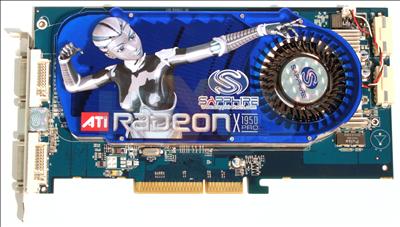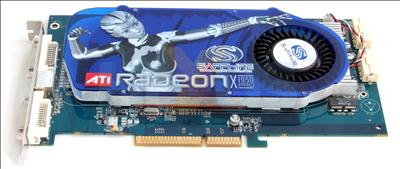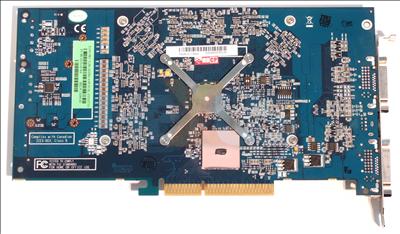Sapphire X1950 Pro AGP 512MiB appearance
Sapphire's AGP X1950 Pro interpretation is slightly different.
The PCB is physically larger than the equivalent PCI-Express', thanks to the need to accommodate the Rialto bridging chip.
The cooler remains the same, so it's thermostatically driven and concurrently cools the memory chips. It's still quite noisy when the card is placed under load, though.
Sapphire further distinguishes this SKU by adding 512MiB of GDDR3 memory, rather than the 256MiB present on most other Pros. Is it worth the extra expense? We'll find out in due course.
The clock speeds also match the PCIe version and are a little higher than reference, with the core and memory run at 580.5MHz/1404MHz, up from the default 575/1380.
Interestingly, Sapphire has opted to provide extra juice by the way of two Molex connectors, rather than from a single 6-pin PCIe. It makes no real difference, though, other than potentially running out of connectors on your PSU.
Sapphire manages one-upmanship on GeCube with HDCP support on both DVI ports, if that matters to you. Both cards will let you play high-definition Blu-ray and HD-DVD playback in all their glory on Windows Vista, then,
It's easy to spot the location of the Rialto bridging chip. Sapphire must have faith in its operating tolerances; it's not actively cooled.














